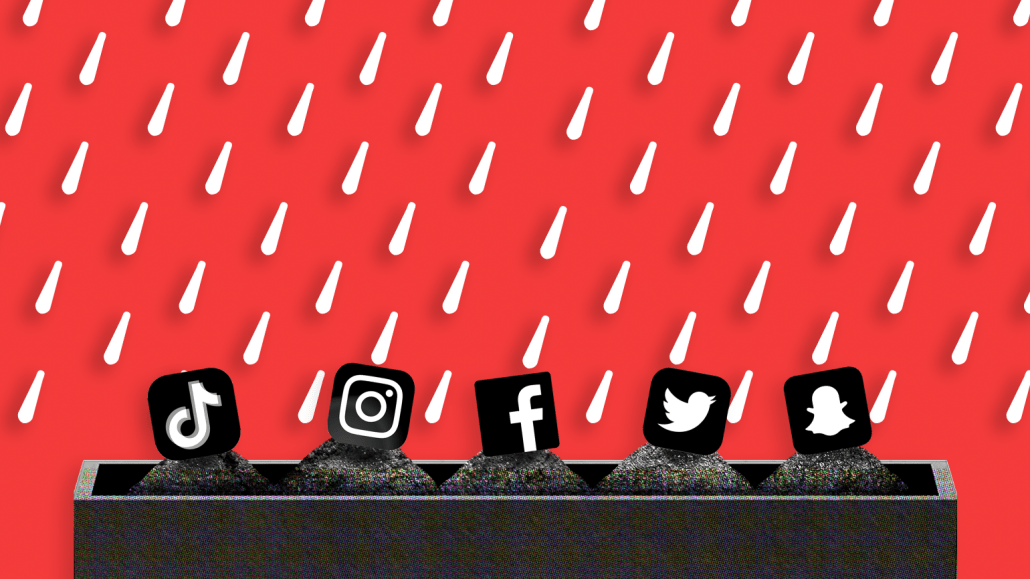Register by Jan 13 to save on passes and connect with marketers from Uber, Bose and more
Aerie boosts spending for paid social, influencers as it continues to use un-retouched photos for ads

Aerie hasn’t retouched photos for its ads since 2014 — an effort that’s helped the brand generate headlines and stand out among its competition as it shows what people really look like while wearing their products. The company is continuing to do so with its advertising efforts this fall, touting user-generated content as social media and influencer marketing takes up more ad dollars for the brand.
“Paid social and influencers are the biggest slice of the pie,” said Stacey McCormick, svp of marketing for Aerie, adding that the brand has invested in UGC as the brand’s community and customers “respond to that most.” The company increased spending over the past two years so the brand could do more “native, fun activations using talent, creatives, influencers and our internal teams.” Even so, the company does “like to keep OOH in the mix for us to splash into a market.”
Aside from paid social and influencer marketing, Aerie uses digital display and streaming to show up where their customers are spending their time and boost brand awareness.
The brand is also experimenting with live shopping on its own channels with live shopping streams featuring guest stars, celebrity stylists and brand associates to showcase the brand’s products. That effort doesn’t use paid advertising as Aerie is treating it like “its own channel rather than an event on a different platform,” noted McCormick. At the same time, Aerie does reserve a small budget for more traditional channels like OOH but “these are used sparingly given they’re less targeted,” said McCormick, without providing exact figures.
It’s also unclear how much the brand has increased its spending on paid social, UGC or influencer marketing as McCormick declined to share specifics. Per Pathmatics data, Aerie has spent $6,861,300 on advertising efforts so far this year, up from $5,183,400 in 2021. The company spends roughly 55% of its monthly ad budget on TikTok, 23% on Instagram, 13% on Facebook and 9% on Snapchat, per Pathmatics data.
Aerie is far from alone in beefing up UGC, paid social and influencer marketing. As platforms like TikTok have become more and more popular, especially with younger generations, the unfiltered approach to content and advertising has become more popular for some brands making UGC more appealing. Marketers and agency execs expect that to continue, especially given the current economic climate as finding ways to cut budgets and get more bang for a buck will be even more important.
That Aerie has been using unretouched photos in its ads for several years now will likely help it in its effort to reach Gen Z consumers, according to industry analysts, who say that it adds authenticity to the brand’s messaging, something that’s become even more important for brands looking to reach Gen Z.
“They’ve been aligned with Gen Z’s social consciousness for a while,” said Allen Adamson, brand consultant and co-founder of Metaforce. “Part of what makes it successful is that it’s now baked into the company. Everyone is trying to say and do things to be authentic but they have done that consistently.”
Duane Brown, founder of performance marketing shop Take Some Risk, agreed with that sentiment noting that while it’s not a revolutionary idea “it’s good for more brands to show real people, using real products and not try to overproduce/professionalize that final piece of content or ad that everyone else sees.”
Brown added: “As long as the brand is also showing a huge diversity of people: age, body size, race etc. I can see this doing well. Looking at the [latest] batch of images, people from more diversity of backgrounds would help them a lot more I feel. Right now it feels 80% white/white passing.”
Going into the fourth quarter, Aerie plans to focus on what works and converts consumers for the brand. Given the ongoing economic uncertainty, brands are taking a closer look at their ad budgets.
“All of us are looking at our budgets and looking at what gets us the best bang for the dollar,” said McCormick. “Where we may have had things in the past that were more brand building, upper funnel we’re looking to shift that to be more mid-funnel, lower funnel where we can drive results and really capture that customer where they are to get them to convert. We’re really looking at what we get for the dollars we have.”
More in Marketing

‘The year where the dust settles’: Digiday editors share 2026 predictions
Between generative AI pilot projects and emerging agency hold co models, 2026 will be the year that signals turn into strategy.

Virality is no longer just a vibe at MrBeast’s Beast Industries
MrBeast is hiring a head of viral marketing. Marketers would be wise to pay attention.

‘This is what the future will look like’: Accenture Song has moved upstream of advertising
Accenture Song has outgrown the agency business without becoming an agency.








